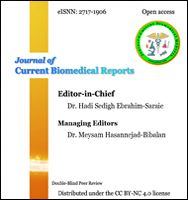HIV/AIDS awareness and attitude among factory workers in Shiraz, Iran
Abstract
HIV has been introduced as a causative agent for AIDS which is still considered as a major health problem for the country and a burden on the health care system. Raising awareness and knowledge plays a critical role in controlling HIV infection in all social groups. Therefore, this study aimed to investigate the awareness and attitudes of factory workers regarding HIV/AIDS infection in Shiraz, Iran. This cross-sectional study was conducted on 92 factory workers in Shiraz, selected via the random sampling technique. A standard researcher-made questionnaire was used to collect data. Around 84% of participants were male and 65.2% had 30 years of age or more. The majority of responders considered shared syringe as the main transmission route in Iran. The awareness level of the general aspects of HIV infections and possible transmission modes were high. A large proportion of responders believed that patients should be supported by the governments and that they have the right to lead a normal life, meanwhile they were scared for their children having an infected classmate. It can be concluded that the public programs to increase awareness had a positive effect on factory workers' knowledge. However, some misconceptions toward HIV patients were identified that need to be corrected. In addition, further studies should be conducted in other cities to reach an accurate estimate of HIV/AIDS awareness among factory workers as a big part of our society.
Keywords
References
UNAIDS. Report on the global HIV/AIDS epidemic July 2002. Available from: http://data.unaids.org/pub/report/2002/brglobal_aids_report_en_pdf_red_en.pdf
Jaiswal S, Magar BS, Thakali K, Pradhan A, Gurubacharya DL. HIV/AIDS and STI related knowledge, attitude and practice among high school students in Kathmandu valley. Kathmandu Univ Med J (KUMJ). 2005; 3(1):69-75.
UNAIDS. Global HIV & AIDS statistics — Fact sheet. Available from: https://www.unaids.org/en/resources/fact-sheet
Mumtaz GR, Riedner G, Abu-Raddad LJ. The emerging face of the HIV epidemic in the Middle East and North Africa. Curr Opin HIV AIDS. 2014; 9(2):183-91.
UNAIDS. Epidemic transition metrics. People living with HIV. Islamic Republic of Iran. Available from: https://www.unaids.org/en/regionscountries/countries/islamicrepublicofiran
WHO, UNODC, UNAIDS. Technical Guide for countries to set targets for universal access to HIV prevention, treatment and care for injecting drug users. Available from: https://www.unaids.org/sites/default/files/sub_landing/idu_target_setting_guide_en.pdf
Bertozzi S, Padian NS, Wegbreit J, et al. HIV/AIDS Prevention and Treatment. In: Jamison DT, Breman JG, Measham AR, et al., editors. Disease Control Priorities in Developing Countries. 2nd edition. Washington (DC): The International Bank for Reconstruction and Development / The World Bank; 2006. Chapter 18. Available from: https://www.ncbi.nlm.nih.gov/books/NBK11782/ Co-published by Oxford University Press, New York.
Dadipoor S, Shahsavari S, Ghaffari M, Rakhshanderou S, Safari-Moradabadi A. Iranian school students’ awareness of and attitude towards HIV/AIDS: a systematic review. Int J Adolesc Youth. 2020; 25(1):240-50.
Dehghani A, Dehghani P, Dehghani B. HIV/AIDS Knowledge and Attitude among High School Students in Shiraz, Iran in 2015. J of Midwifery Reprod Health. 2017; 5(2):897-903.
Askarian M, Hashemi Z, Jaafari P, Assadian O. Knowledge about HIV infection and attitude of nursing staff toward patients with AIDS in Iran. Infect Control Hosp Epidemiol. 2006; 27(1):48-53.
Rostamzadeh M, Afkhamzadeh A, Afrooz S, Mohamadi K, Rasouli MA. Dentists' knowledge, attitudes and practices regarding Hepatitis B and C and HIV/AIDS in Sanandaj, Iran. BMC Oral Health. 2018; 18(1):220.
Ataei B, Shirani K, Alavian SM, Ataie M. Evaluation of Knowledge and Practice of Hairdressers in Women's Beauty Salons in Isfahan About Hepatitis B, Hepatitis C, and AIDS in 2010 and 2011. Hepat Mon. 2013; 13(3):e6215.
Gholamrezaee Sarvelat Z, Sharifirad G, Zamanian H, Mohebi S. Effect of Educational Intervention Based on the Health Belief Model on the Improvement of the Health Performance of Female Hairdressers in Qom, Iran. Arch Hyg Sci. 2020; 9(2):109-20.
Dehghani B, Dehghani A, Sarvari J. Knowledge and Awareness Regarding Hepatitis B, Hepatitis C, and Human Immunodeficiency Viruses Among College Students: A Report From Iran. Int Q Community Health Educ. 2020; 41(1):15-23.
John-Stewart G, Mbori-Ngacha D, Ekpini R, Janoff EN, Nkengasong J, Read JS, et al. Breast-feeding and Transmission of HIV-1. J Acquir Immune Defic Syndr. 2004; 35(2):196-202.
Mullany LC, Maung C, Beyrer C. HIV/AIDS knowledge, attitudes, and practices among Burmese migrant factory workers in Tak Province, Thailand. AIDS Care. 2003; 15(1):63-70.
Abera Z. Knowledge, attitude and behavior (KAB) on HIV/AIDS/STDs among workers in the informal sector in Addis Ababa. Ethiop J Health Dev. 2003; 17(1):53-61.
Islam MM, Conigrave KM, Miah MS, Kalam KA. HIV awareness of outgoing female migrant workers of Bangladesh: a pilot study. J Immigr Minor Health. 2010; 12(6):940-6.
Hasan AH, Hassan R, Khan ZR, Nuzhat E, Arefin U. Influence of socio-demographic factors on awareness of HIV/AIDS among Bangladeshi garment workers. Springerplus. 2013; 2(1):174.
DOI: https://doi.org/10.52547/JCBioR.2.2.79
Refbacks
- There are currently no refbacks.
Copyright (c) 2021 © The Author(s)

This work is licensed under a Creative Commons Attribution-NonCommercial 4.0 International License.













